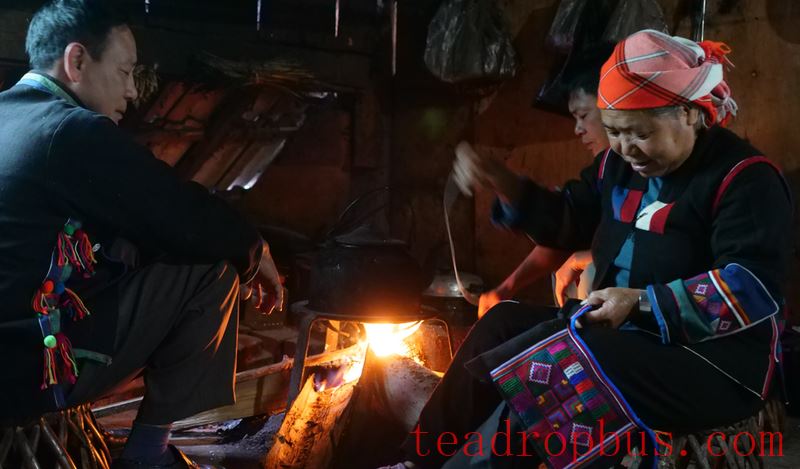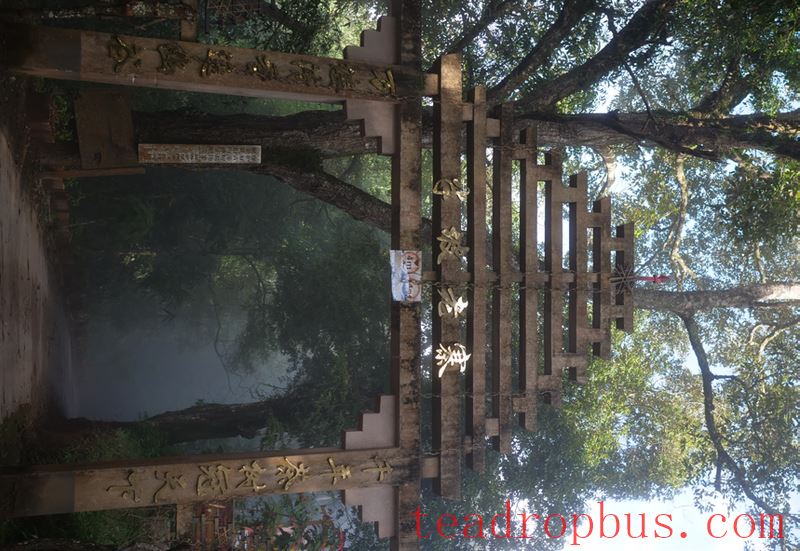Nannuoshan



The area of Nannuoshan is vast, not only ranking first in the entire Menghai Tea region for its ancient tea gardens, but also not lagging behind in modern tea gardens. It could be said that there are endless sights to see on Nannuoshan.
In our understanding, Nannuoshan is a mountain range and, as a tea-producing region, can be considered an extensive tea village belonging to the Gelande Township.
Nannuoshan has a long history. As early as April 1938, the Nannuoshan Tea Factory was built and put into operation. The factory manager, Bai Mengyu, introduced machinery from India and hired over ten senior tea masters from Shanghai and Hangzhou to produce black and Green Tea by machine, processing approximately 1,200 market piculs of tea annually, which were popular in Southeast Asian markets.
The ruins of the Nannuoshan Tea Factory are still located in the old stone village of Nannuoshan.
In addition, there is the Xinghuo Mountain Tea Factory, where Mr. Zhang Shenga, the former director of the Tea Research Institute, had worked intensively for three years.
Tea Mountain Immersive Experience Model

Each village within the large village of Nannuoshan has ancient tea gardens. This area was one of the earliest to have road access, making it the most convenient for travel, so the Hani people living in the mountains were the first to come into contact with the outside world and were also the most influenced by Han culture among all the tea mountains.
However, most visitors to the tea mountains simply pass through in a hurry, heading straight for the distant Bulang Mountain and He Kai.
Xiong Chuantao, founder of the Jin Yitang brand, initially had the same mindset when he started making tea, but it seemed that only by peeling back the layers of mystery and delving deep into the forest's secrets would the Herbs collected by hand become even more precious.
After more than a decade in the tea industry, since 2015, Xiong Chuantao decided to focus his efforts on Nannuoshan.
In his opinion, Nannuoshan has a great location, and the entire tea mountain ecosystem is well-preserved.
He used to take clients to experience the famous Laobanzhang tea mountain, but after thoroughly studying the history and ecological environment of Nannuoshan, he regretted not choosing this heavenly place sooner—why go far when you have something good nearby?
The truth is that Nannuoshan can indeed serve as an excellent model for immersive experiences in Yunnan Pu'er tea mountains.
The villages are close to each other, and now with roads, they are even easier to navigate. Bamboo Forest Village, Half Slope Old Village, and Ya Kou Village, each about five kilometers apart, have ancient tea gardens connected end-to-end. In the past, there was a dirt road running through the middle of the tea gardens, creating a very beautiful tea mountain tourism route.
Ya Kou Village is above Duo Yi Village, followed by the old stone village, new stone village, Nannuoshan Tea Factory, Girl Village, Yongcun Village, Erdian Village, and Xiangyang Village. Each village has tea gardens, and driving around, you will find scenery of ancient tea gardens and ancient tea villages everywhere, with endless sights to behold.
This vast expanse of ancient tea gardens was once a paradise built by the Hani people over 800 years, and today it has become an intangible cultural heritage of humanity.
The Most Prosperous Days of Half Slope Old Village
On the slopes of Nannuoshan, there is a very famous village called Half Slope Old Village, embraced by ancient tea gardens.
The village faces Jinghong Plain to the east of Cha Xiajiaojiao (a mountain name) and can also see the ancient tea mountains of Daman Song. Half Slope is renowned for its many ancient tea gardens and the presence of an 800-year-old tea king tree.
Xiong Chuantao chose the ancient trees of Half Slope Old Village as his core raw material for making tea. The village is at a high altitude, with a wide view, and winter is the best time to enjoy the sea of clouds here.
Arriving at the home of Pizhu, the party branch secretary and group leader of Half Slope Old Village, a wooden house in the Hani style was being built right outside his door, and next to it was a display showing the village rules and regulations of Half Slope Old Village.
Reading carefully, these were all clauses related to village discipline and appearance, as well as many contents about protecting the ancient tea gardens.
“Our Half Slope Old Village now has the smallest population, with only 27 households and 131 people. There used to be many more people in the village, but many moved down the mountain because life was too hard,” said Pizhu while brewing tea.
“When we were young, we did everything—farming, growing corn, raising pigs—but we often went hungry. At that time, tea couldn't fetch a good price, and many trees were cut down.”
In the past, Half Slope Old Village had over 120 households, and everyone struggled due to the difficulty of farming on the mountain.
In 1995, many young and strong villagers left the village, leaving behind the most concentrated ancient tea gardens.
Today, Half Slope Old Village has nearly 2,000 mu of ancient tea trees. The path leading to the tea king tree is shrouded in mist and clouds, giving off an ethereal feel, especially during rainy days.
This tea garden is well-managed, and the tea trees appear more weathered compared to those in other villages on Nannuoshan. Many of them have circumferences exceeding one meter, and most of the ancient tea trees require ladders or stakes for picking.
“The owner of this tea garden is Men Jia, and it is also one of his best tea plots.
He is a descendant of the past Hani chieftain, and now most of the tea gardens in Half Slope belong to him.” Xiong Chuantao spoke as he drove towards Men Jia's home.

Men Jia was more insightful and forward-thinking than other villagers. When poverty drove many villagers to migrate out of the village, he remained firm in his conviction, staying on the land left by his ancestors and trading fields at the foot of the mountain for the villagers' tea gardens.
By continuously exchanging land and buying tea plots, Men Jia came to own the best and most prosperous tea gardens in all of Half Slope Old Village.
“The path leading to the tea king tree passes through Men Jia's tea garden. From inside the tea garden, you can overlook the entire Jinghong, and the scenery is very beautiful,” said Xiong Chuantao.
Entering Men Jia's home, we didn't see him; instead, his twenty-something son Jia Er entertained guests in the tea room. We learned that the elder had been drinking late into the night and hadn't gotten up yet.
Men Jia's newly constructed concrete house stands next to his old wooden house, which is now his kitchen in the Hani style.